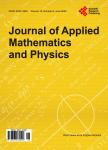Numerical and Experimental Study on Vibration and Noise of Embedded Rail System
Numerical and Experimental Study on Vibration and Noise of Embedded Rail System作者机构:Bridge Engineering Division National Center for Research on Earthquake Engineering Taiwan Department of Civil Engineering National Taipei University of Technology Taiwan
出 版 物:《Journal of Applied Mathematics and Physics》 (应用数学与应用物理(英文))
年 卷 期:2017年第5卷第9期
页 面:1629-1637页
学科分类:1002[医学-临床医学] 100214[医学-肿瘤学] 10[医学]
主 题:Embedded Rail System Noise and Vibration Analysis Finite Element Method Boundary Element Method
摘 要:The Kaohsiung light rail transit (LRT) system first introduced embedded rail system in Taiwan. However, domestic engineering consultants are still lacking in experience of analysis, design and construction of embedded rail systems. Noise and vibration of the mass rapid transit system is an important environmental issue in an urban environment. In order to understand the environmental impact of noise due to structural vibrations caused by a train running on the rail system, this paper establishes a numerical analysis procedure to perform a simulation. There are two fundamental parts to the numerical simulation: 1) vibration response due to a moving load and 2) radiation propagation of noise induced by structural vibration. The Kaohsiung LRT is used as a case study. The real embedded rail track system is modeled using ANSYS software with finite element analysis and the dynamic time history of the vibration response of the rail caused by a moving load is obtained. Secondly, the dynamic vibration response of the rail outputted by ANSYS is then imported into the software LMS *** to obtain the external radiation and sound field pressure distribution transferred from the rail to a specific monitoring point, based on the boundary element method. This paper also conducts field measurements of vibration velocity and sound pressure as a train passes. Both the experimental and analytical results for noise at specific points are compared and discussed. The proposed procedure promises to be suitable for practical vibration and noise analyses for rail systems.



